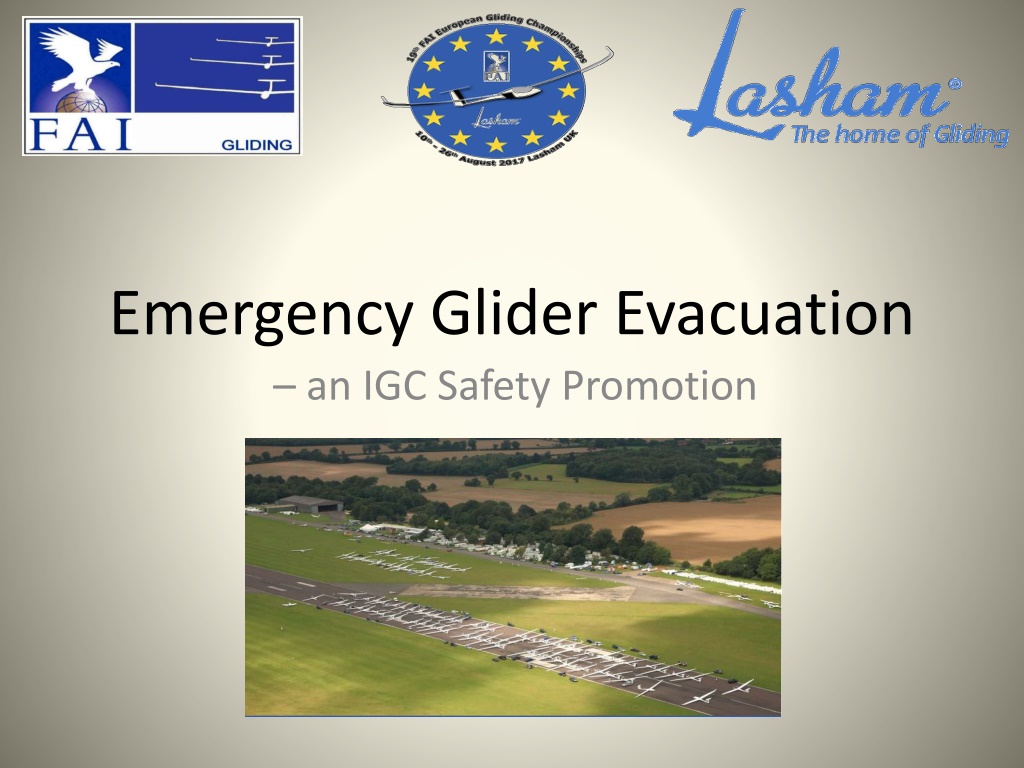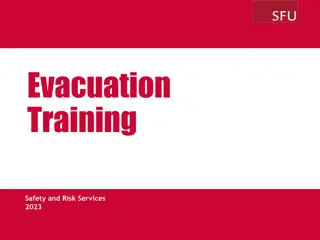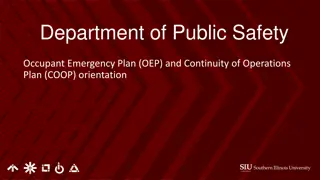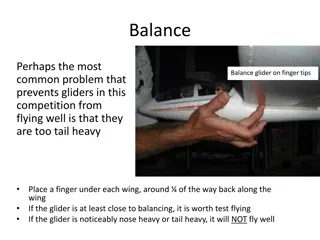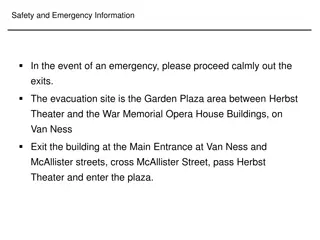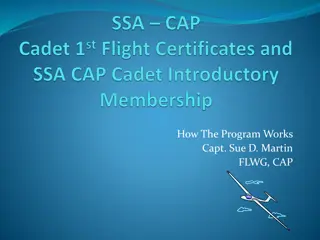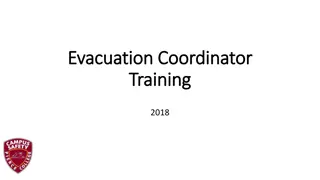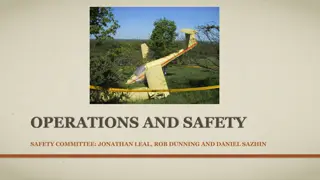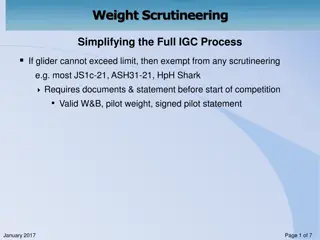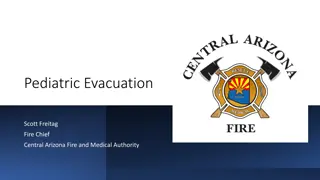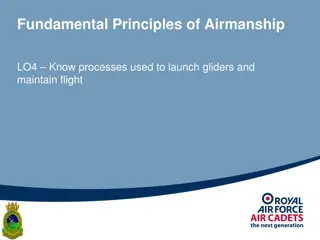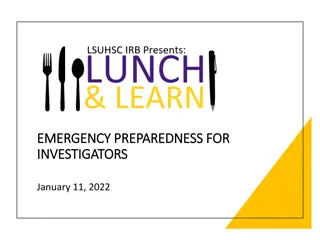Glider Emergency Evacuation Safety Guidelines
Safety guidelines and procedures for emergency evacuations from gliders are outlined, emphasizing the importance of quick actions and height considerations for successful bailouts. The content covers scenarios such as baling out, releasing the canopy in different flight conditions, and maneuvers to exit a glider in emergency situations. It also highlights the OSTIV research on minimum survival heights and essential questions to consider before takeoff.
Download Presentation

Please find below an Image/Link to download the presentation.
The content on the website is provided AS IS for your information and personal use only. It may not be sold, licensed, or shared on other websites without obtaining consent from the author.If you encounter any issues during the download, it is possible that the publisher has removed the file from their server.
You are allowed to download the files provided on this website for personal or commercial use, subject to the condition that they are used lawfully. All files are the property of their respective owners.
The content on the website is provided AS IS for your information and personal use only. It may not be sold, licensed, or shared on other websites without obtaining consent from the author.
E N D
Presentation Transcript
Emergency Glider Evacuation an IGC Safety Promotion
If you can get out of the glider in just 4 seconds Your minimum height for survival is 600m OSTIV research
BEFORE you take off, answer 2 key questions: 1. What situation would make you bale out? 2. What is the Emergency Canopy Jettison procedure for your glider? The following slides are suggestions for your consideration, not necessarily a direct instruction
Should I bale out? Do you have enough height for a successful bale out? If it s marginal and even if the glider seems to be flying normally, baling out while there is enough height for successful parachute deployment is the safest option.
Baling Out: 1. Open the brakes The wing might come off, but probably not, and if you are headed down it slows acceleration and gives more time between now and hitting the ground or break up due to Vne / flutter. 2. Get out of the glider... See over
Getting out of a glider... in a spiral dive In a spiral dive - increasing positive G 1. release the canopy (it may or may not leave the aircraft) 2. release the straps and shove the stick hard forward - you will probably be thrown out of the glider. Otherwise roll over the side of the cockpit.
Getting out of a glider... in negative pitch If negative pitch, this means the tailplane is damaged or gone, so: 1. release the canopy 2. release the straps and you will leave the glider very quickly indeed. Again, it doesn't really matter if the canopy is still there, you will take it with you.
OSTIV SDP Safety Pays Sailplane Development Panel Sailplane Development Panel Proposal B Emergency Emergency roll out from roll out from the cockpit the cockpit Roll manoeuvre Roll manoeuvre depending on the depending on the type of type of panel panel (Professor Wolf (Professor Wolf R ger Fachhochschule Fachhochschule Aachen R ger, , Aachen)
OSTIV SDP Safety Pays Sailplane Development Panel Sailplane Development Panel Proposal B Emergency Emergency roll out from the cockpit from the cockpit roll out Roll manoeuvre Roll manoeuvre depending on the depending on the length of the length of the canopy canopy (Professor Wolf (Professor Wolf R ger Fachhochschule FachhochschuleAachen R ger, , Aachen)
Once you get out, pull the ripcord immediately. Practice this: LOOK (at the D ring) GRASP (thumb of left hand through the ring, the other hand on top to lock your hands onto it - so you don't fumble) PULL (a long pull in line with the bowden cable) And then ARCH (hands up over head, chest forwards to get a clean shape to minimise chance of a malfunction).
If you are ABOVE min bale-out ht: If you have control of the glider you can start to assess the damage - which parts are damaged and how badly. Always keep the minimum survivable bale out height in mind. Regardless of your where you are with your damage evaluation, if you reach the height limit, bale out.
Is the glider damaged at the back end? even if it is still flying, you should get out anyway
If the back end is not damaged: Close the brakes if open and check that you have full elevator, aileron and rudder control Try to assess the visible damage. If both of the above are OK, flying down is an option.
If you are going to fly down: 1. Make an emergency radio call 2. Where will you land? Are you in gliding range of an airfield or suitable? Are there roads and signs of people? 3. Fly the glider so as to minimise the loads on the airframe.
